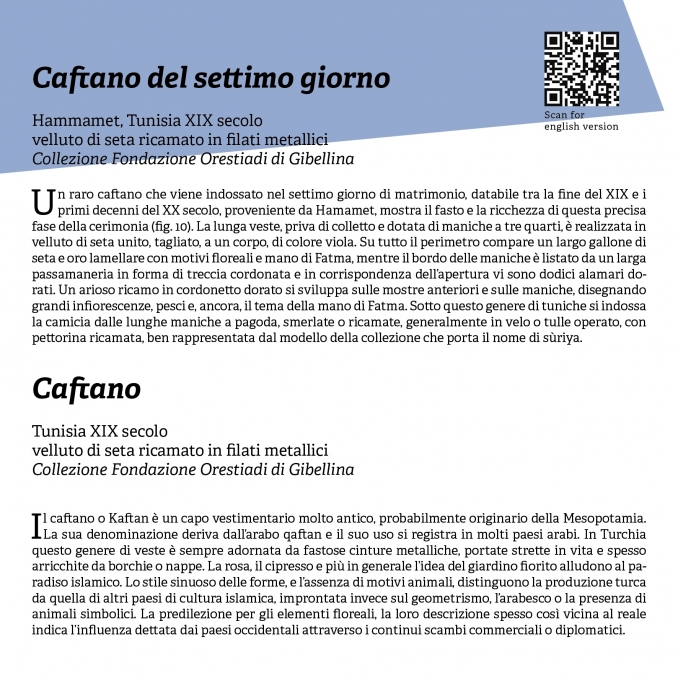Seventh-day Kaftan
Hammamet, Tunisia, 19th century
Silk velvet with metal embroidery
Collection of the Orestiadi Foundation of Gibellina
A rare kaftanworn on the seventh day of marriage, datedbetween the end of the 19th century and the beginning of the 20th century, originating from Hammamet, it displays the pomp and the wealth of thisexactphase of the cerimony. The long vest, collar-free and with three-quarters sleeves, is made of cutsilk velvet joined with a purplebodypiece. On the wholesurfacethereis a large galloon made of silk and lamellargold with a floreal pattern and the hand of Fatima, the cuffs are adorned with a large braidedpassementerie, and there are twelve golden austrianknots on the front. An airyembroidery made of golden cord sprawls on the front and on the sleeves, creating images of flowers, fish and, again, the hand of Fatima. Under thiskind of garment, a long shirt with embroidered sleeves isworn, usually made of tulle, with an embroideredwaistcoat, wellrepresented by the suriya model of the collection.
Kaftan
Tunisia, 19th century
Silk velvet with metal embroidery
Collection of the Orestiadi Foundation of Gibellina
The kaftan (or caftan) is a veryancientgarment, probablyoriginated in Mesopotamia. Its name isderived from the arabic "qaftan" and it'swidelyused in variousarabic countries. In Turkeythiskind of vestisalmostalwaysadorned with sumptuousmetallicbeltstightlywrappedaround the waist and sporting tassels. The images of the rose, the willow and the blooming garden reference the islamic idea of paradise. The sinuous style and the absence of animalmotifsdistinguishturkishkaftans from the ones made in arabic countries, wheregeometricmotifs, arabesques and symbolicanimals can be found. The partiality towards floralelements, theirdescription so close to the real world, denotes the influence western countries hadthroughtheirongoingdiplomatic and commercial exchanges.

